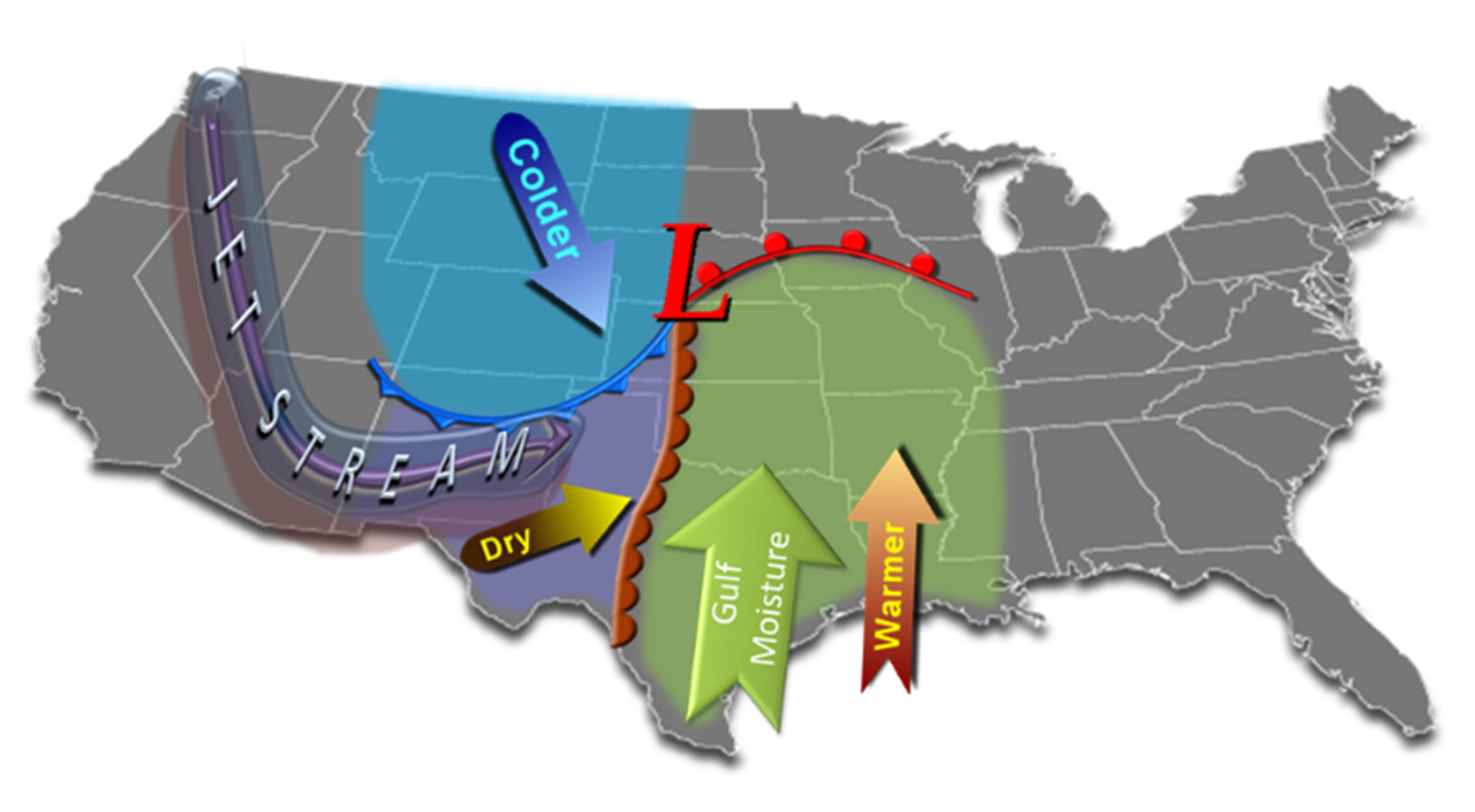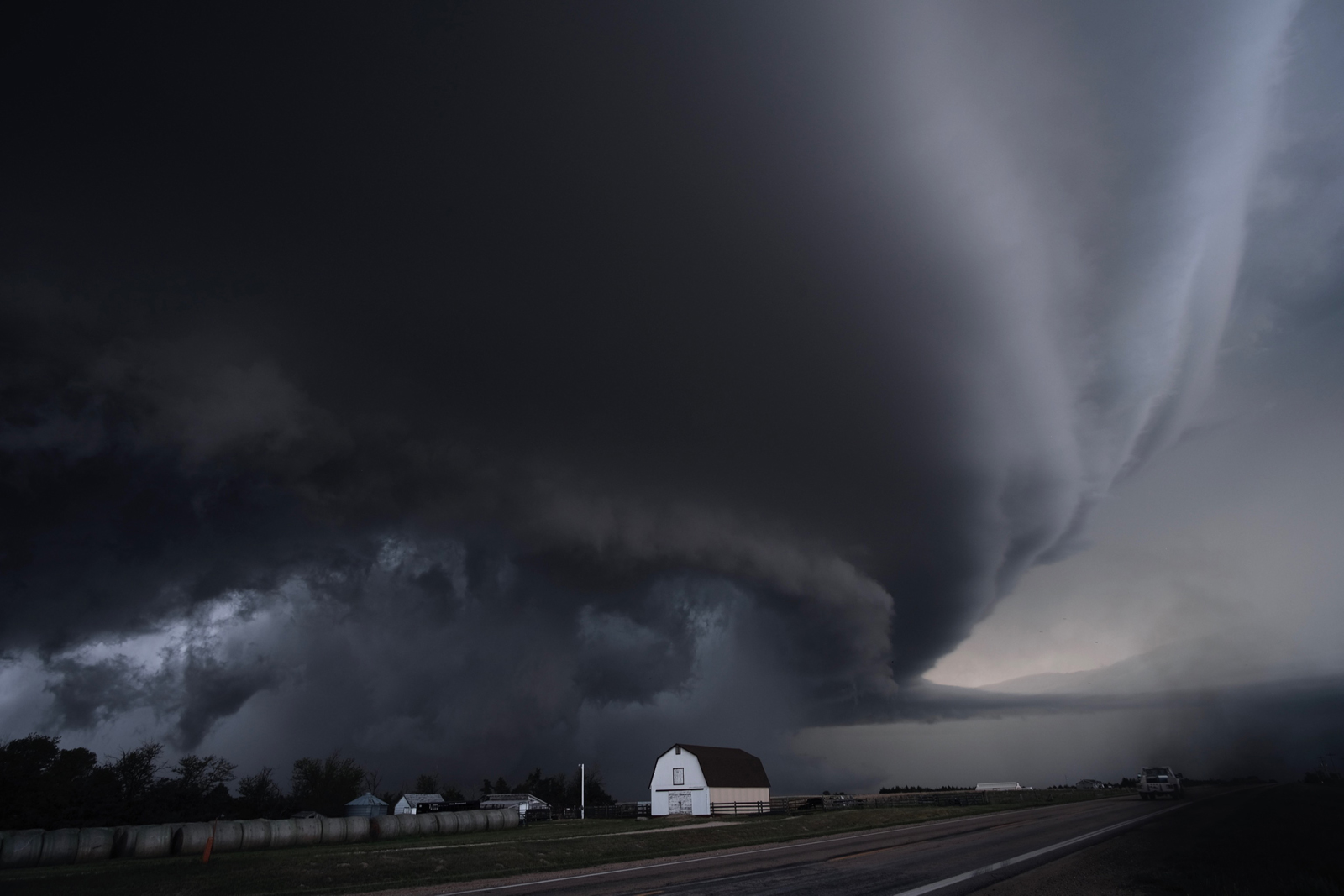Editor's note: Retired Springfield meteorologist Drew Albert offers a series of monthly columns on weather trends in the Ozarks. For more on planning for severe storms, see our Daily Citizen series on tornado safety.
While March is considered to be the first month of meteorological Spring, in the Ozarks, April is where “spring is sprung.”
Depending on how mild March is, some trees are already flowering by the beginning of April and if the iconic redbuds aren’t flowering, they soon will be. Oak, hickory, and walnut trees are still bare on April 1, but by the end of the month, new leaves will be out. quickly changing the Missouri Ozarks forest landscapes from brown to green.
April also “springs” the severe weather season in southern Missouri. Yes, we can see severe storms in any month of the year, but statistically, March to June is typically the most active with the peak of severe weather season in April and May.
Why is severe weather more common in April and May?
The three main ingredients for severe weather are:
- Moisture — In Missouri, the most common source of moisture for storms is the Gulf of Mexico
- Instability — Warm air near the surface and cold air aloft promoting lift
- Vertical wind shear or strong wind fields aligned in such a way to produce longer lasting organized thunderstorms.
All three of these ingredients are present together more often during April and May versus other months.
Triggers for severe storms are cold fronts and sometimes a Southern Plains dry line, which occasionally shifts east into the Ozarks while the three ingredients align.

What is considered a severe thunderstorm?
The National Weather Service officially defines severe thunderstorms as storms that can produce hail that is an inch in diameter or larger or wind gusts over 58 mph. In practice, the National Weather Service will solicit and receive storm damage reports in as close to real-time as possible and couple those reports with radar data to decide whether to issue severe thunderstorm warnings. In rare cases, severe storms can produce hail larger than softballs and straight-line winds greater than 100 mph. Winds of this magnitude are more destructive than many tornadoes.
What is the definition of a tornado?
Well, the definition may seem obvious, but appearances can be deceiving. I can hear my former National Weather Service colleague and Springfield Warning Coordination Meteorologist Steve Runnels’ voice (in a spotter talk mantra style) as I write this: “A tornado is a violently rotating column of air reaching the ground.” I’ll add that it is connected to the parent thunderstorm, or sometimes more rarely just a convective shower without lightning present (usually a weak/brief tornado).
If you happen to spot a tornado, the condensation part of the funnel is what you see. Sometimes the rotation will reach the ground and kick up debris without the visible part of the funnel present. And then there are “funnel clouds” that occur while the rotation remains aloft.
About 15 percent of what are classified as supercell thunderstorms, with their characteristic rotating storm updraft, produce tornadoes. Supercells produce the entire spectrum of tornado severity, capable of producing tornadoes with wind speeds greater than 200 mph. Meteorologists use the Enhanced Fujita scale (EF scale) to classify the intensity of tornadoes.

Supercells are also capable of very large hail as well. Supercell storms moved through Polk County, including Bolivar on April 21, 2022 producing over $5 million in hail damage. (See pictures from KOLR10).
Weather safety: have good information and have a plan
First things first. How do you get reliable weather information? Emergency managers and meteorologists recommend having multiple sources. Why? If you own, say, a smartphone and happen to be outside mobile service coverage, you need another source. Everything from smartphones to over-the-air television and weather radios should cover most situations. Our local television stations offer great severe weather coverage, especially for stronger storm events.
For smartphone users, there are several good weather apps for both iPhone and Android devices, plus Springfield local television media outlets have their own. Find one or more reliable weather app(s) that broadcasts National Weather Service warnings in real-time.
For those more tech-inclined, smart devices from Google and Amazon (and others) can be programmed to alert you with audible warnings or simply just blink your indoor lights.
My advice is to shy away from sensationalized social media posts, but social media can be good for general awareness before and after severe weather. Just don’t rely on social media for real-time storm warnings. Follow local television stations, or check out the Springfield National Weather Service on Facebook or Twitter.
At home, at work, or outdoors knowing how vulnerable you are to severe weather and having a plan to protect yourself — just in case — is common sense. What room is safest from severe winds or a tornado? Is a storm shelter or basement available if you live in a mobile home? Does your workplace or park have a designated storm shelter? The Springfield-Greene County Office of Emergency Management offers great advice for emergency planning in almost any situation.
Finally, April by the weather numbers for Springfield — data from the National Weather Service and the Midwest Regional Climate Center:
| Temperature | April 1 | April 15 | April 30 |
| Normal High (Degrees F) | 65 | 68 | 72 |
| Normal Low (Degrees F) | 41 | 45 | 50 |
- Median day of the last freeze (32 degrees F) is April 10.
- The median day for the last hard freeze (28 degrees F) is April 4.
- Record all-time high temperature for April is 93 degrees F (1963).
- Record all-time low for April is 16 degrees F (1920).
| Precipitation for the month (inches) | Highest | Lowest | 30-year avg |
| 12.15 (1945) | 0.15 (1989) | 4.71 |
- Greatest one-day rain: 4.31 inches in April 2017.
- The highest total snowfall was 7.1 inches in April 1971. The average monthly snow is 0.3 inches.


